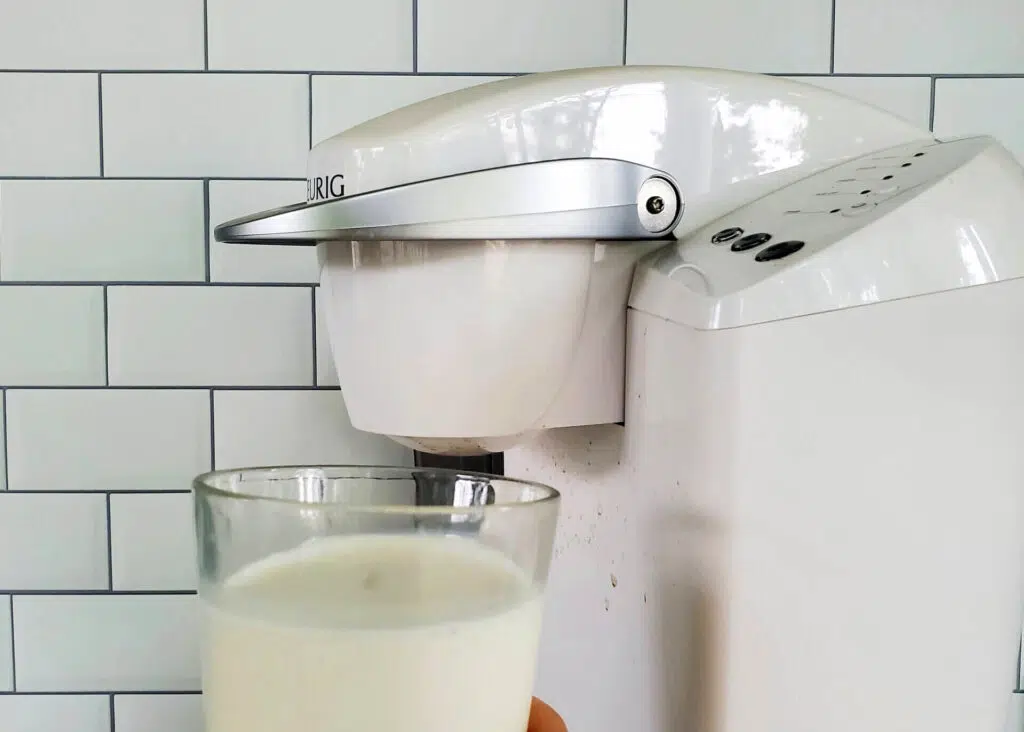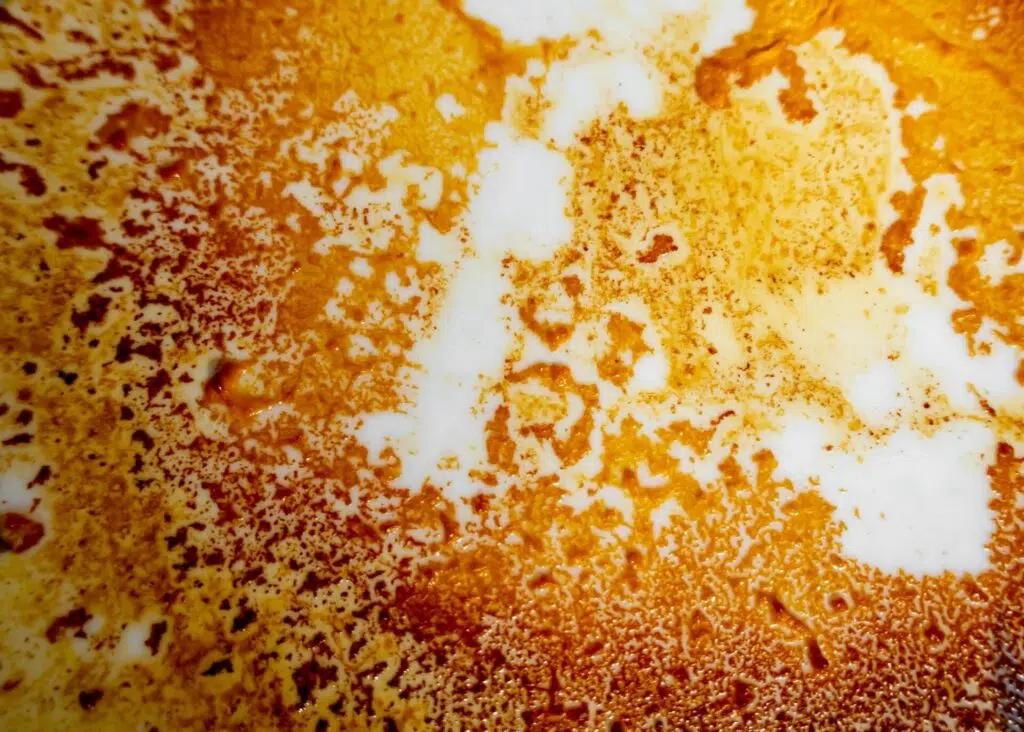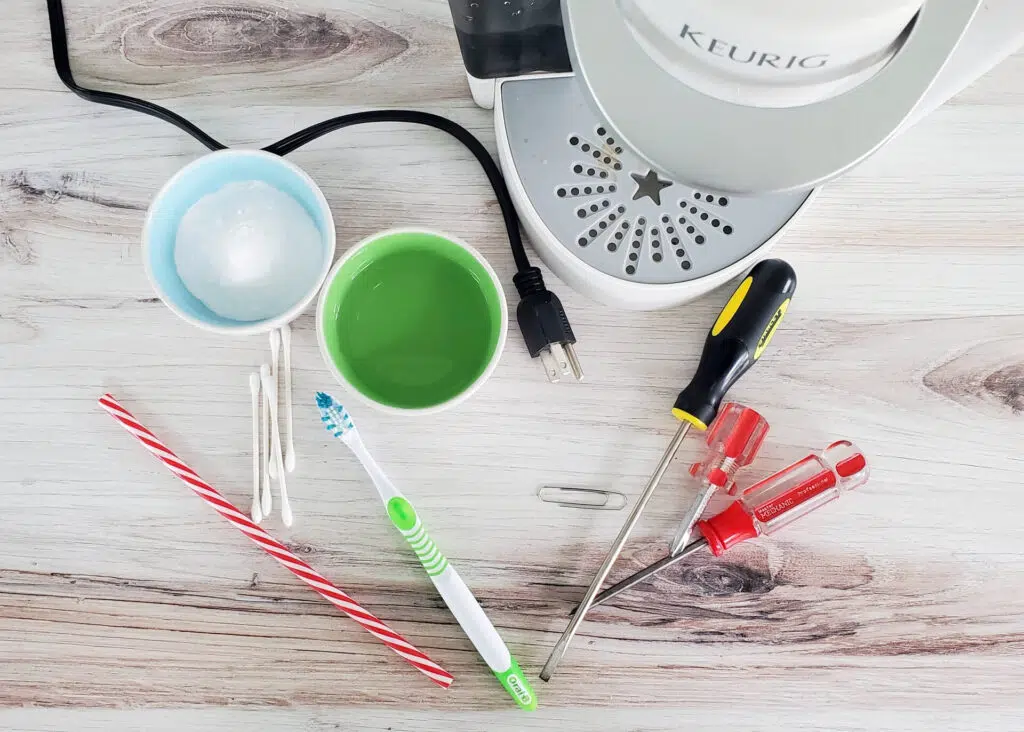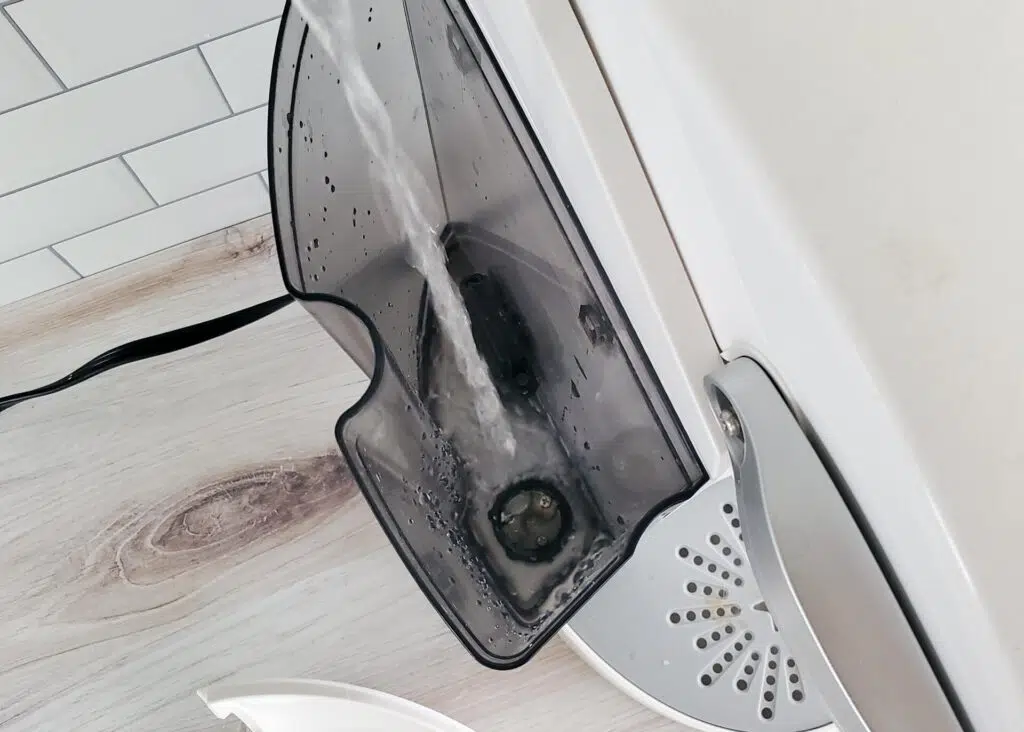You are craving a cup of creamy hot chocolate or a delicious latte, but you don’t have much time to prepare it. That’s when the thought strikes you. Your Keurig always makes you a quick cup of coffee. So can you put milk in a Keurig water reservoir to make milky drinks?
You might think you’ve had a stroke of genius, but is it really so? Read on to learn what will happen if you try pouring milk into your Keurig.
Why you should never put milk in a Keurig
So, here you are, standing next to your Keurig with a milk carton in hand. They are such convenient machines for making a single serving of coffee. So why not pour a bit of milk into it?
However, the answer is a hard NO. Never, ever pour anything but water into your Keurig’s water tank. That’s a terrible idea that may have fatal consequences for your coffee machine.
The Keurig water reservoir is specifically designed for circulating water through the machine’s internal system and nothing else.
If you were to put milk instead of water into the Keurig, you would just clog the machine. And that’s the best-case scenario. To understand why this could happen, you need to know how a Keurig works and how milk behaves in high temperatures.

What happens to heated milk in your Keurig?
Brewing coffee with a Keurig is easy, and the wait time for a single cup is only a couple of minutes, thanks to the rapid heating. But that’s also why milk is a Keurig’s mortal enemy.
During brewing, a Keurig machine will heat water to around 192°F (89°C). Therefore, pouring milk into your Keurig will not make it boil. However, at around 180°F (82°C), milk will begin to curdle.
So when you attempt to run the milk through your Keurig, the milk solids will stick to the machine’s internal components. Needless to say, that will not result in a delicious drink.
What to expect if you put milk in the Keurig?
Perhaps you are still tempted to try making a latte with your Keurig? Or maybe your precocious ten-year-old decided to use the machine to make hot cocoa? If that’s the case, here’s what you can expect if you put milk in the Keurig.
Clogged internal parts
Milk is thicker than water, which prevents your Keurig from working efficiently. So when the coffee maker tries to push milk through the water tubes, milk residue can stick to their surfaces and clog them partially or entirely.
The curdled milk may form blobs inside your coffee machine. You can probably guess what such a chunk will do in the Keurig’s water tubes.
It’s easy to burn milk (please don’t ask how I found that out). Your coffee machine is meant to empty the water tank and bring the water to nearly boiling in less than a minute.
This quick process will overheat milk and cause it to scorch or burn. As milk burns inside your Keurig, it produces a strong, sharp odor. And your drink won’t be much better — a latte or hot chocolate made with burned milk will result in a bitter-tasting beverage with a sour smell.

Bacteria in your coffee machine
When you make your favorite coffee in your Keurig, some water will always remain in the water reservoir and water tubes. That’s normal and perfectly fine. But what if you add milk to your Keurig, and some of it remains in the coffee machine? That’s right; it will spoil.
Bacteria can start growing in milk at room temperature within two hours. So if your Keurig still works after your experiment with milk, and you try to brew a cup of regular coffee with moldy, spoiled milk lurking in your Keurig’s internal parts, you will not get a good result. Your coffee will likely have a revolting smell, like that wafting from your Keurig.
Damaged machine
Putting milk in your Keurig can easily damage the machine, possibly ruining it beyond repair. It could happen in a variety of fascinating but equally catastrophic ways.
Let’s say the milk curdled and clogged your Keurig. The machine won’t know it and will keep trying to circulate water — or more milk, in the worst-case scenario — through it. The pressure will build in the water tubes until they break somewhere.
Another way milk could break the Keurig is by burning. As milk dries or burns, it forms a hard crust. The milk residue on your Keurig’s heating elements can lead to overheating and scorched metal components.

Can Keurigs be cleaned after adding milk?
If all my warnings came too late and you — or someone else — has already tried adding milk to your Keurig, I’m sorry for your loss.
The damage has been done, and the machine is most likely beyond repair. Milk residue is very sticky, and due to how your Keurig works, it will have spread throughout the machine’s internal components.
Since your Keurig gets saturated with milk residues, cleaning them out will require opening the machine to get to every part of it. That’s when you face a big problem.
Opening your Keurig for home repairs will void its warranty. So if your machine is less than one year old, you risk paying an additional cost for professional repairs after you try fixing it yourself.
Tips for cleaning your Keurig
If you are a handy DIY mechanic and your Keurig warranty has expired (or you just don’t care about it), you can try to salvage your milk-encrusted coffee maker. Giving your Keurig a thorough internal cleaning takes a lot of effort, and there’s no guarantee of success. But since the coffee maker is likely headed for the garbage bin anyway, you might as well try!
What you need to clean milk from a Keurig
Clearing the remnants of a hot chocolate disaster from your Keurig’s reservoir and internals isn’t straightforward. You will need some tools to get inside your coffee machine for proper cleaning.
Items needed to deep clean a Keurig:
- The Keurig user manual
- Screwdrivers of various sizes
- A scrubbing sponge
- A toothbrush
- Cotton swabs
- Paper clip
- A straw
- Hot water
- Distilled water
- Vinegar
- Baking soda
- Keurig cleaning solution

The Keurig deep cleaning process
After you’ve gathered all the tools, you can start cleaning your coffee machine. With careful washing and a bit of luck, you may be able to brew your favorite hot beverage again.
Remember to gently handle the machine and its parts throughout the entire process. You are dealing with details you are not supposed to be touching, so be careful not to break them.
Here’s how to deep clean your Keurig coffee maker:
- Turn the power off and unplug your Keurig.
- Read your user manual to learn how to disassemble the machine.
- Carefully take apart all components of your Keurig. Make sure to keep them in order so you can re-assemble them later.
- Boil the water and mix a half cup of vinegar and a little baking soda. Don’t use too much soda, or the solution can thicken.
- Submerge all internal parts and the water reservoir in the vinegar solution. Let them soak for a few hours to dissolve milk build-up.
- Once the vinegar soak is complete, use the sponge, cotton swabs, paper clip, and toothbrush to remove any undissolved residue gently.
- Rinse all parts. You may want to wash removable components — like the K-Cup holder, water tank, and drip tray — in the dishwasher.
- Re-assemble the machine.
- Fill the water tank with the Keurig cleaning solution and water mixture and run the brew cycle several times without a K-Cup. You can use the vinegar and water mixture if you don’t have a cleaning solution.
- Rinse the water tank under the running water.
- Run several brew cycles without a coffee pod using distilled water to flush any remaining cleaning solution.
If, after deep cleaning your Keurig, it works again, but you still notice a sour smell or off-taste, you are better off investing in a new Keurig.

How can I make milk-based drinks with Keurig?
Although you shouldn’t put milk in a Keurig, that doesn’t mean you can’t make a milk-based drink with it. As long as you handle the machine right and heat cold milk with the right appliances, you can make delicious lattes, cappuccinos, and hot chocolate in a matter of minutes.
Use appropriate K-Cups
A great thing about Keurig machines is the sheer variety of coffee pods. In addition to black coffee, Keurig makes pods specifically for milky drinks. For example, Keurig latte pods contain dry milk, so you can brew your cafe latte in a cinch.
You can make hot chocolate with special pods that you’ll find in the most well-stocked grocery stores. These K-Cups are filled with cocoa powder, so all you need to do is insert them into the pod holder and run the normal brewing cycle.
Heat milk with a separate appliance
If you want to add warm milk to your Keurig coffee, the easiest way is to heat it in a saucepan on a stove. You won’t get textured milk by using this method, though.
Buying an electric milk frother is a great idea if you enjoy frothy milk. With it, you can make hot or cold textured milk and add it to your favorite coffee drinks whenever you want.
It might be worth investing in a Keurig K-Cafe machine if you want to enjoy quick milky drinks regularly. These coffee makers have built-in milk frothers. That way, you can froth milk while you brew your coffee.
A Keurig coffee maker is a wonderful companion for any coffee lover who wants to enjoy a steaming and quick cup of joe. Just don’t try adding milk into it. Remember — the answer to “can you put milk in a Keurig” is always NO.
Even if you own a simple coffee maker such as Moka Pot, pouring milk into it is still not a good idea. If you want a milky and smooth hot beverage, stick to appliances made for heating milk. Your drinks will always come out delicious, and you’ll avoid dealing with a sticky, nasty, and expensive mess.
